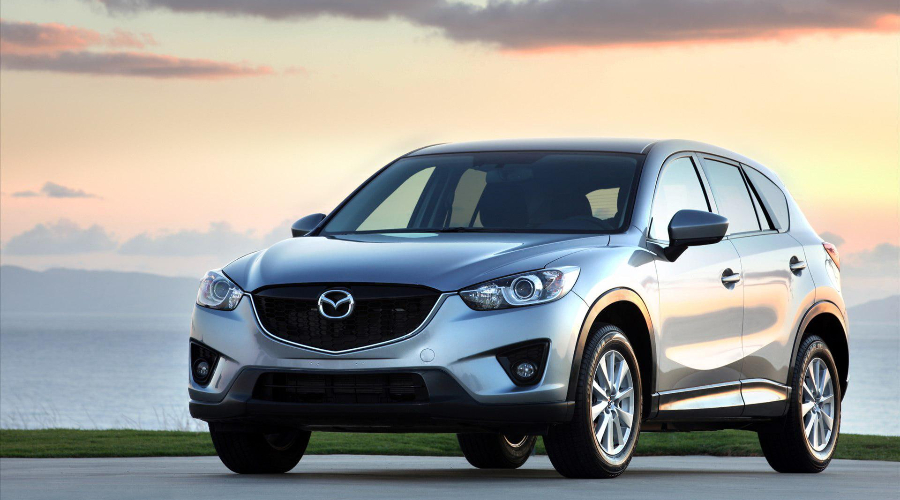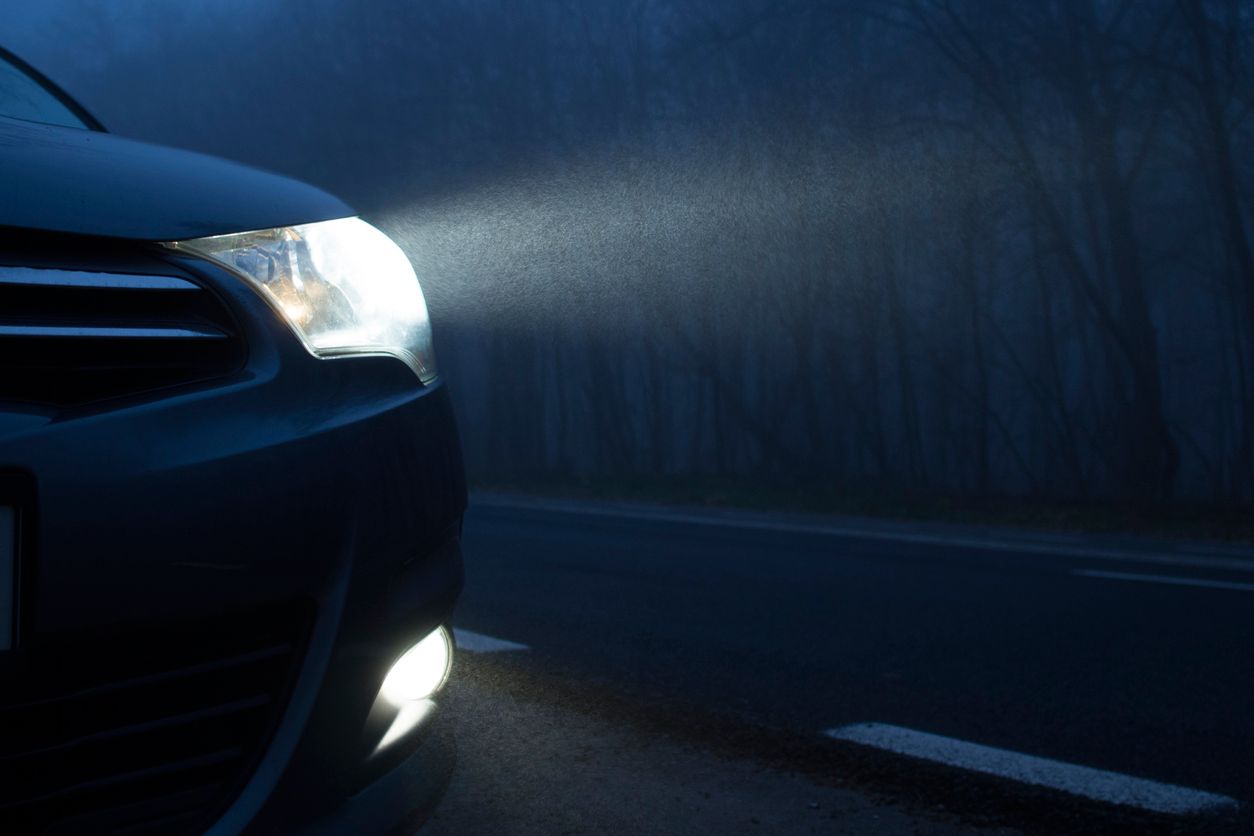Your stylish Mazda CX5 SUV experience can quickly become an expensive headache. This popular crossover ranked second among 75 cars in the 2022 Car Buyer Driver Power survey for best cars to own in the UK. Yet it hides some pricey issues under its sleek exterior.
The CX-5’s impressive performance since 2013 features sporty handling and a five-star Euro NCAP safety rating. However, several common problems continue to affect owners. Transmission repairs average £81.38, while electrical fault diagnostics alone cost around £61.49. The situation became more serious when some 2016 models faced a recall. This affected over 36,761 vehicles due to faulty daytime running lights. On top of that, owners frequently report the alarming “ghost touch” infotainment system issue and unexpected shattering of sunroof glass.
These 15 common problems could seriously impact your wallet, especially when you have a Mazda CX-5 from 2013, 2015, 2016, or 2021 model years. Let’s tuck into what might go wrong and the potential costs you should expect.
Control Short Circuit

The control short circuit problem ranks as one of the most dangerous electrical issues in the Mazda CX-5. This problem can leave drivers stranded without any warning. Models built between 2012 and 2017 face this issue more often, which worries many owners.
Control Short Circuit Description
The CX-5’s control short circuit happens because of an electrical failure in the vehicle’s control circuit system. The engine might suddenly stop while you’re driving, and the brake assistance drops substantially. This creates dangerous situations, especially when you’re driving at high speeds or in heavy traffic.
The dashboard often lights up with multiple warning signals. Your cruise control system might stop working completely. The electrical system blows fuses automatically when it detects a short circuit to shield the system from more damage.
Control Short Circuit Root Cause
The electrical fault in the control circuit lies at the heart of this problem. Damaged wiring or connections create unwanted electrical pathways in many cases. The insulation around wires can deteriorate and connection points can corrode due to moisture, heat changes, and regular wear over time.
Many CX-5 owners point to poor ground connections as the culprit, especially those in the passenger front wheel well. Bad ground connections between the headlight and wheel area can trigger several electrical problems at once, including control circuit issues.
Control Short Circuit Repair Cost
You need specialized equipment and expertise to diagnose this electrical issue. Professional services charge about £61.49 ($75) to diagnose electrical faults on Mazda CX models. This price covers only the diagnosis, not the actual fix.
The total repair bill changes based on the damage level. Replacing fuses costs less, but new wiring harnesses or control modules can push bills above $300.
Some owners who like to fix things themselves fixed similar electrical problems by cleaning ground connections in the wheel well area. This fix might not work for every control short circuit case though.
Daytime Running Lamps Flickering
The 2016 Mazda CX-5’s LED daytime running lights have become a major headache for owners. Flickering lights ended up causing expensive repairs. This problem is systemic and led Mazda to recall 36,761 vehicles in the United States in February 2020.
Daytime Running Lamps Flickering Description
LED daytime running lights (DRLs) start to flicker intermittently while the vehicle moves. The condition gets worse and one or both front DRLs might stop working completely. The low beam headlights work fine – only the daytime running lights have issues. Drivers won’t see any warning lights on their dashboard, which makes this malfunction more concerning. These running lights turn on automatically when the vehicle starts moving. They turn off when drivers engage the parking brake or the selector lever moves to the P position in automatic transaxle vehicles.
Daytime Running Lamps Flickering Root Cause
Mazda’s official statement points to “an inappropriate material specification of the sealing gasket attached to the LED daytime running light wiring connector”. The gasket releases sulfur over time and corrodes the LED circuit that controls the DRL. Circuit corrosion first causes flickering and then complete failure. This design flaw affects 2016 CX-5 models built between November 3, 2014, and December 7, 2015.
Daytime Running Lamps Flickering Repair Cost
Mazda’s design makes repairs expensive because DRLs are part of the headlight assembly. Owners must replace the entire headlight assembly instead of just fixing the broken part. Parts alone cost about AED 2203.16 ($600) per side. The total repair bill with labor could reach AED 5507.91 per side.
Dealers fix recalled vehicles by replacing the old sealing gasket with a new black one. They also apply absorption material to both headlights to prevent sulfur buildup. Some cases require dealers to replace the entire headlight unit at no cost. Many owners paid these big repair bills before the recall announcement. The failure usually happens after the standard 36,000-mile warranty expires.
Fuel Pump Impeller Failure

A serious safety concern for Mazda CX-5 owners relates to the low-pressure fuel pump impeller failure. This has led to a substantial recall of over 121,038 vehicles in the US and US territories. The issue affects 2018-2019 models and can leave drivers stranded or create hazardous driving conditions.
Fuel Pump Impeller Failure Description
The problem demonstrates itself through noticeable drops in engine power. Drivers notice this especially during acceleration or when driving uphill. The condition worsens and owners experience more alarming symptoms:
- Engine sputtering or jerking movements under heavy load
- Vehicle starting becomes unreliable
- Whining noise comes from the fuel tank area
- Vehicle stalls, especially after long drives or in hot weather
- Check engine light illumination
The fuel pump failure can prevent the engine from starting. It might also cause the vehicle to stall at low speeds. In rare but dangerous cases, stalling can happen at higher speeds, which substantially increases the risk of accidents.
Fuel Pump Impeller Failure Root Cause
The technical cause comes from the impeller’s deformation inside the low-pressure fuel pump under certain conditions. Mazda’s largest longitudinal study between April 2019 and February 2020 revealed two main factors behind this defect:
The testing solvent used in manufacturing could cause impeller cracking as it dried. Fuel pumps with lower density impellers exposed to this production drying solvent for longer periods developed severe cracking. This led to excessive fuel absorption and ended up causing deformation.
High ambient temperatures in the vehicle’s operating environment speed up this failure. This explains the varying occurrence rates across different regions.
Fuel Pump Impeller Failure Repair Cost
Engine light diagnostics on Mazda CX models costs £57.53 (approximately $70) when booked through professional services. A complete repair needs the entire fuel pump assembly replacement. Parts alone cost between AED 989.18-1469.18 ($270-$400).
Mazda’s recall program fixes this issue without charging owners. Dealers replace the fuel pumps completely. Owner notification letters went out in January 2022. Parts became accessible by summer 2022.
SCR System Wiring Damage
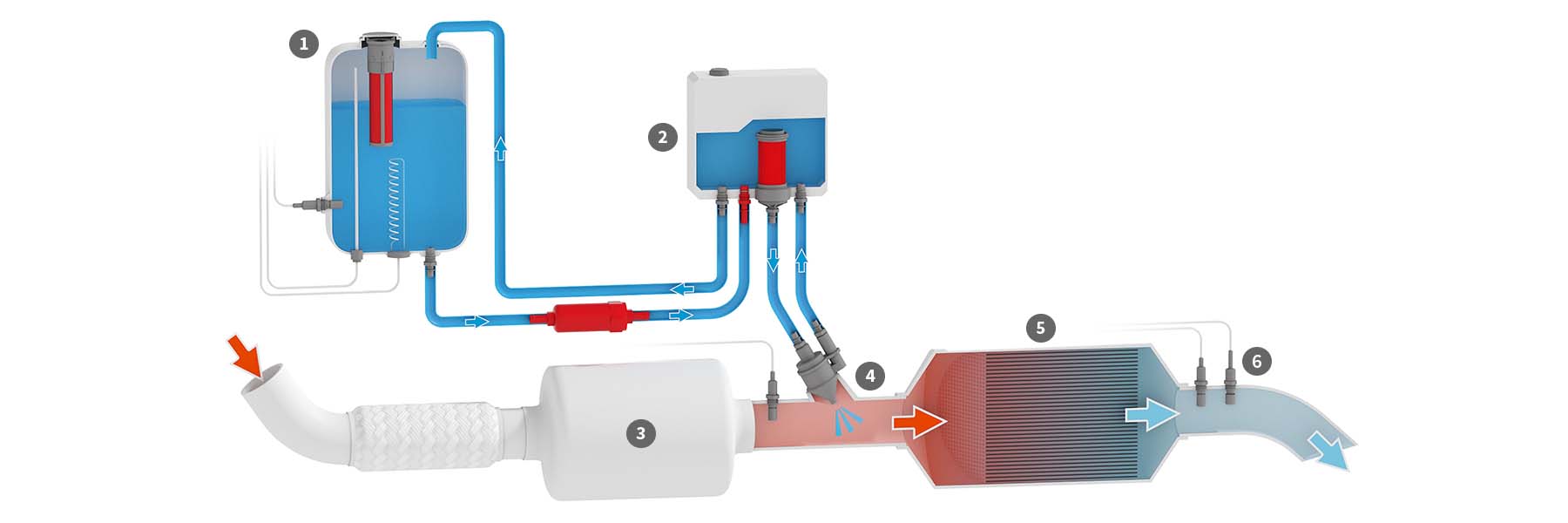
Mazda CX-5 diesel models built between 2018 and 2020 have a most important emissions system problem. The issue affects the Selective Catalytic Reduction (SCR) system wiring. Mazda launched a recall that impacts 2,187 vehicles in the UK alone and roughly 17,824 vehicles in Europe.
SCR System Wiring Damage Description
The SCR system reduces nitrogen oxide (NOx) in exhaust gas by using AdBlue® fluid (also called Diesel Exhaust Fluid or DEF). Damaged wiring harness leads to several warning signs:
- Dashboard’s SCR warning light comes on
- Check engine light (MIL) activates
- Warning messages pop up in the multi-information display
- Car speed might slowly drop to 50 km/h (31 mph)
The situation can get worse. The car might enter a limited operation mode where the engine won’t restart after turning off the ignition. This creates huge problems for drivers who can’t restart their vehicles after getting fuel or making quick stops.
SCR System Wiring Damage Root Cause
The problem starts with the SCR system’s wiring harness. It lacks proper wear resistance and follows a specific path around the SCR tank cover. Sand and dirt build up on the wiring harness during regular driving. The SCR tank cover’s vibrations make these particles wear down the wiring harness insulation.
The constant rubbing eventually damages the wiring harness circuits and disrupts the electrical system. This design flaw shows up in CX-5 models made from May 15, 2018, to September 24, 2020.
SCR System Wiring Damage Repair Cost
Professional services charge about £257.02 ($320) to fix catalytic converter issues, including SCR system problems, on Mazda CX models. The good news is Mazda’s recall program (recall number R/2021/439) covers this specific issue.
Mazda’s fix starts with an SCR harness inspection. Technicians install a protective device if they find no damage. They repair damaged wiring harnesses before adding the protective device. Quick action matters because waiting too long might mean replacing the entire SCR system, which costs much more.
Stub Axle and Shock Absorber Issue
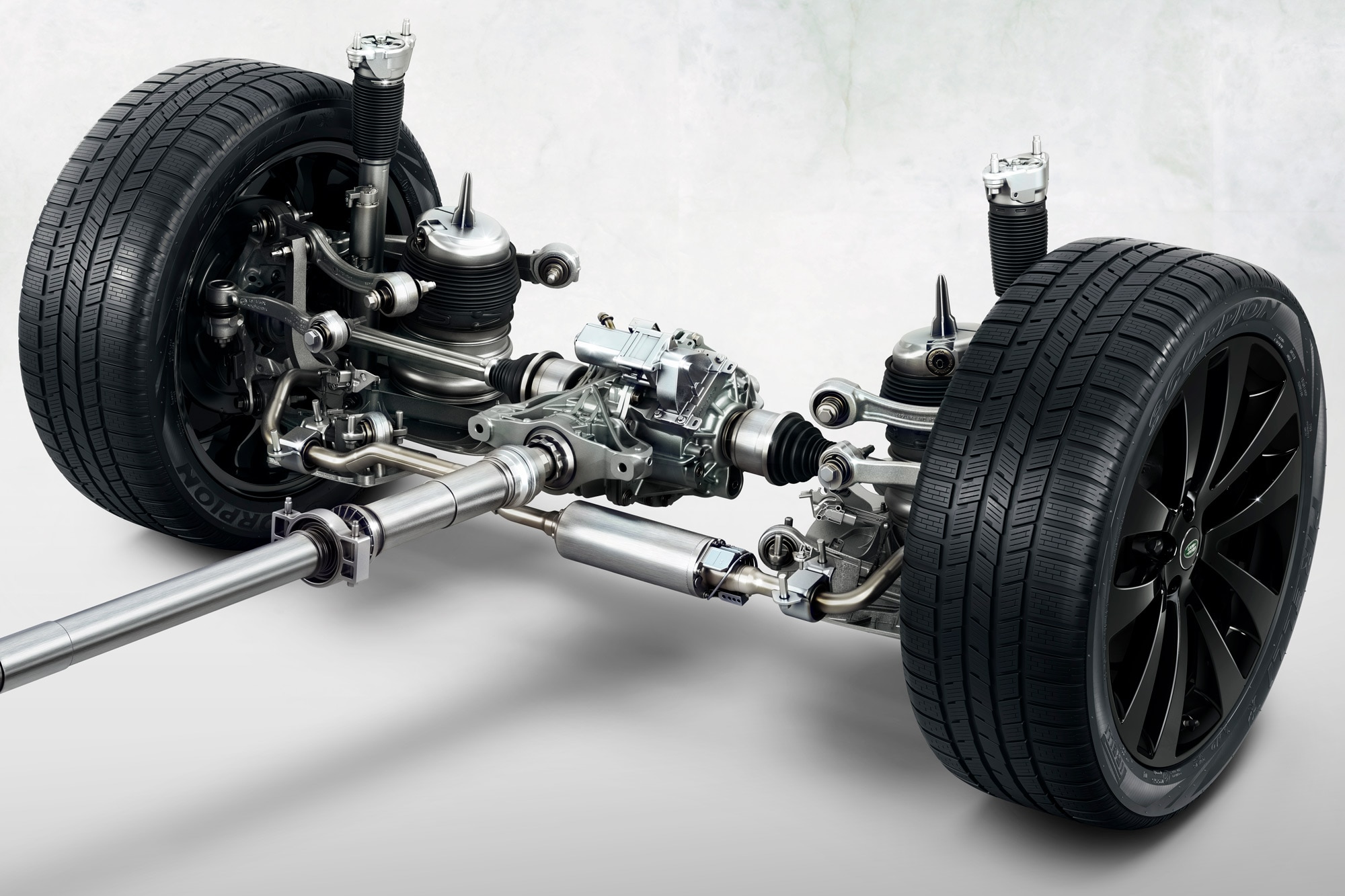
Mazda CX-5 models face serious structural problems because of faulty connections between the stub axle and shock absorber. This creates major safety risks for owners. The CX-3 models built in 2014 are most affected, though other versions can have this issue too.
Stub Axle and Shock Absorber Issue Description
The first warning sign comes as clicking noises during turns, especially when driving slowly. The situation gets worse as drivers experience unexpected bounces after bumps and unstable handling. Complete loss of steering control can happen in severe cases. Drivers often hear loud crunch or crash sounds during turns, which suggests the connection has failed completely.
Many Mazda CX-5 owners have reported cases where the stub axle separated from the shock absorber while driving. A driver’s experience shows how “the right ball joint somehow dropped out of the knuckle.” This caused the axle to pop out and damaged other suspension parts.
Stub Axle and Shock Absorber Issue Root Cause
The biggest problem starts with the screw connection between the stub axle and shock absorber. It becomes loose as time passes. Regular vibration combined with poor torque during manufacturing causes this loosening. The manufacturing process failed to properly tighten these crucial parts.
The control arm bushings in the front suspension wear out quickly. This puts extra stress on the stub axle connection and makes everything worse.
Stub Axle and Shock Absorber Issue Repair Cost
This ranks among the costliest Mazda CX-5 repairs. Mazda CX model owners pay about £291.40 ($360) on average to fix shock absorbers. A complete replacement costs around £306.31 ($380) for each side.
The costs climb even higher when CV axles or related parts need replacement. Parts alone can cost more than AED 1222.76 ($330).
Defective Engine Control Unit (ECU)
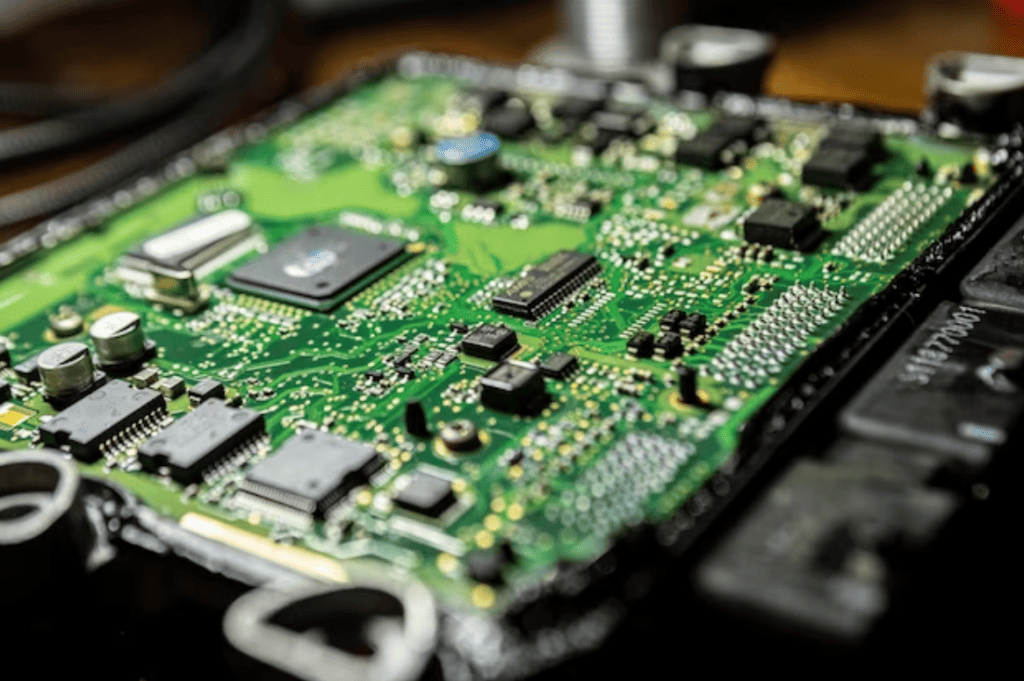
Defective Engine Control Unit (ECU)
Your Mazda CX-5’s Engine Control Unit acts as the “brain” of your vehicle. This vital computer manages critical functions quietly until something goes wrong. A malfunctioning ECU creates a chain of problems throughout your vehicle’s systems. These issues could leave you stranded or create potential fire hazards.
Defective ECU Description
Mazda CX-5’s ECU failure comes with several warning signs. Your dashboard’s check engine light will light up first. The situation gets worse as drivers notice uneven idling, slow acceleration, and sometimes the engine stops completely. Many owners notice their fuel efficiency drops significantly because the ECU can’t regulate the air-fuel mixture properly.
The risks get serious when a faulty ECU creates short circuits inside your vehicle. These shorts can damage the converter and create fire hazards. ECU problems don’t usually appear suddenly. They start with small performance issues that get worse over time.
Defective ECU Root Cause
Your Mazda CX-5’s ECU can fail for several reasons. Power surges, bad wiring, or blown fuses can damage the ECU’s sensitive parts. Moisture and contaminants create corrosion inside the unit that ruins connections over time.
Time takes its toll too. The ECU degrades from age and exposure to extreme temperatures. Sometimes the hardware works fine, but software bugs or outdated programming cause erratic behavior.
Defective ECU Repair Cost
ECU repairs rank among the most expensive fixes for Mazda CX5 problems. Just diagnosing the issue costs about £128.44 ($130). A complete replacement at the dealer costs between AED 3,121.15 and AED 5,324.30 (about $850-$1,450) for parts alone. Add another 1.5 hours of labor and reprogramming, and your total reaches AED 3,855.54 to AED 6,058.70 ($1,050-$1,650).
You can find cheaper options through aftermarket companies. They sell remanufactured PCMs starting at AED 917.99 ($250). These units come pre-programmed and updated, so you just need to install them. But be careful with aftermarket ECUs – they might not be as reliable as original parts.
Headlight Lens Fogging

Mazda CX-5 owners face visibility and esthetic problems due to foggy headlights. This issue affects models from several years, with 2013-2016 LED or HID headlight models showing the most noticeable symptoms.
Headlight Lens Fogging Description
A whitish haze or small water droplets inside the headlight housing demonstrate the typical signs of lens fogging. These droplets usually collect in corners and tight spaces where air doesn’t circulate well. Mild cases show temporary condensation that clears up when temperatures rise or after the lights stay on for a while. Mazda calls this “a natural phenomenon” rather than a defect.
The biggest problem lies with 2013-2016 models that have LED or HID headlights. These vehicles develop a “milky white” stain on their lenses that reduces light output. Safety becomes a serious concern as badly fogged headlights can cut visibility by half because light beams scatter.
Headlight Lens Fogging Root Cause
Temperature differences between the headlight housing’s interior and exterior create standard fogging. Water vapor naturally turns into visible droplets on cooler surfaces. Australian drivers see faster deterioration because harsh weather conditions break down the lens coating more quickly.
2013-2016 LED/HID headlight models have a different issue. Gas leaks from a faulty gasket in the lamp unit and sticks to the lens. This gas reacts with the anti-clouding coating to create that distinctive milky look. UV rays gradually break down the protective layer on plastic lenses, which makes them vulnerable to oxidation.
Headlight Lens Fogging Repair Cost
Minor fogging needs no repair since it usually clears up naturally. DIY enthusiasts can buy headlight restoration kits that cost between AED 66.09-73.44 ($18-20). Many CX-5 owners prefer products like Meguiar’s PlastX.
Professional restoration services charge about $120-140 to fix both headlights. Severe cases need complete headlight assembly replacement, which costs $330-600 per side.
Good news for owners of 2013-2016 LED/HID models – Mazda covers free repairs under the new-vehicle limited warranty through service bulletin TSB No. 0901416.
Handbrake Auto-Engage Issue
Mazda CX-5 owners face a puzzling problem with their Electronic Parking Brake (EPB). The system shows an unsettling pattern of engaging by itself, which leaves drivers both confused and frustrated. This random issue affects several model years from 2016-2021 and creates an unsafe driving experience.
Handbrake Auto-Engage Issue Description
The system’s unpredictability makes this problem particularly baffling. The parking brake activates on its own about one-third of the time when drivers shut off their vehicles. Even more concerning, some drivers report their parking brakes suddenly activate while they’re driving, which forces them to stop and release it manually. A 2016 Mazda CX-5 Grand Touring owner’s experience highlights this issue. The brake engaged unexpectedly twice in one week, and the owner noted “when I unlocked brake this morning it happened again a few seconds later.”
The parking brake should only activate under specific conditions during normal operation. These vehicles, however, apply it randomly, which raises serious safety concerns.
Handbrake Auto-Engage Issue Root Cause
The biggest problem stems from how the vehicle’s AUTOHOLD function interacts with the EPB system. The parking brake automatically activates if AUTOHOLD remains engaged while you stop the vehicle, shift to park, and turn off the engine. The brake stays disengaged if drivers don’t press the brake pedal hard enough to trigger AUTOHOLD before shutdown.
Some cases also trace back to damaged parking brake switches, often because of liquid spills near the center console. One technician pointed out, “it’s either thinking the door is open, or there is a problem with the button itself… ever spilt anything on the button?”
Handbrake Auto-Engage Issue Repair Cost
Mechanics usually charge around £100 ($130) just to diagnose this issue. The actual repair costs vary based on what’s causing the problem. Switch replacements cost about $100 for parts, and the total bill reaches $200-300 with labor included. The fix sometimes involves just disconnecting the faulty switch after removing an access panel, which saves money on unnecessary replacements.
Transmission Fluid Leak
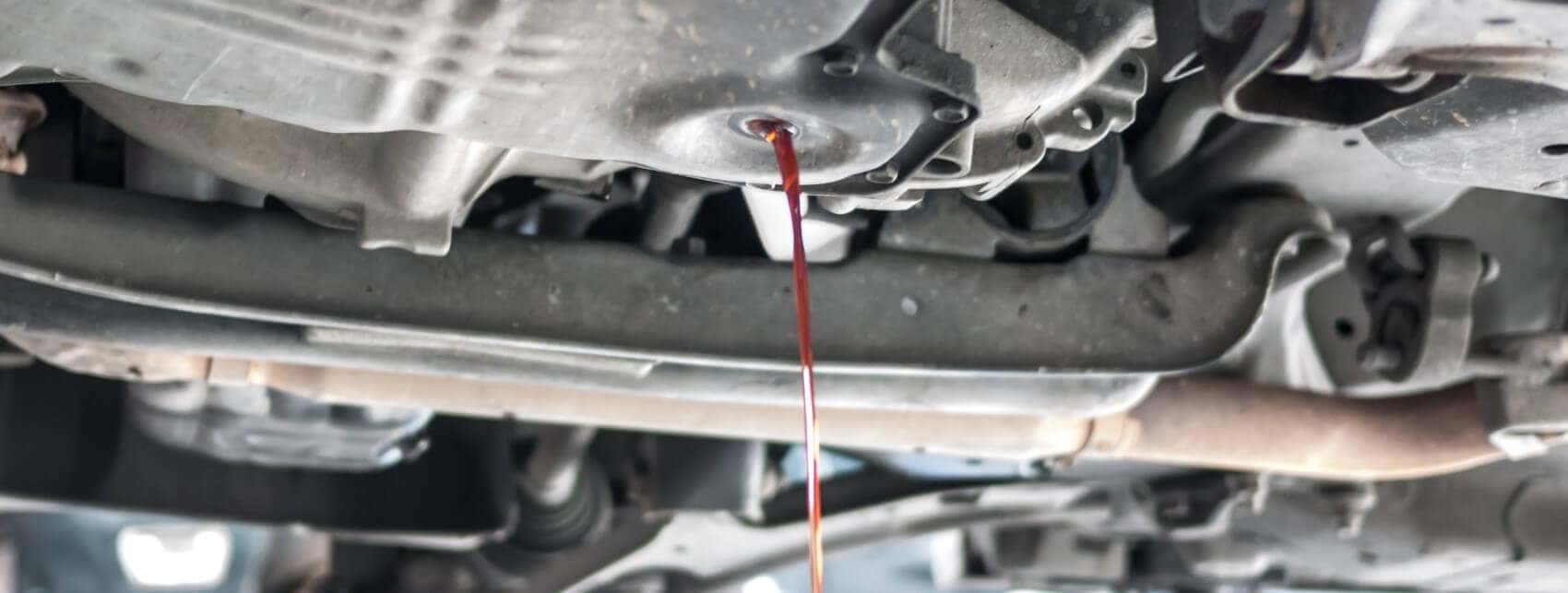
Mazda CX-5 owners often face transmission fluid leaks, which can seriously damage their vehicles. Many drivers don’t notice this problem until their transmission system has already suffered extensive damage.
Transmission Fluid Leak Description
You can spot a transmission fluid leak by looking for reddish or brownish puddles under your parked Mazda CX-5. New transmission fluid appears red or pinkish and darkens to brown as it ages. The system shows other warning signs among other symptoms:
- Your gears slip or shift slowly during acceleration
- The transmission makes whining, humming, or grinding sounds when shifting
- You smell burning or see smoke coming from under the hood
- The car struggles to shift into drive or reverse
A leak exists somewhere in the system if you notice transmission fluid levels dropping despite regular top-offs. Your transmission might stop working completely in the worst cases.
Transmission Fluid Leak Root Cause
We found that damaged or worn-out parts cause most transmission fluid leaks. The transmission pan gasket tops the list of problem areas as it breaks down and lets fluid escape. Here are other common causes:
- Cracked or damaged transmission seals
- Corroded transmission cooler lines
- Faulty torque converter seals
- Damaged or poorly installed transmission pan
Your Mazda CX-5’s risk of transmission leaks increases with higher mileage because seals naturally wear out from heat and age. Extreme temperatures speed up seal deterioration and make things worse.
Transmission Fluid Leak Repair Cost
The repair bill changes based on where the leak comes from and how bad it is. Just finding the problem costs between AED 223.99 and AED 330.47 ($60-$90). Minor leaks that need gasket replacement run about $150-200 for parts and labor.
Bigger problems like fixing a torque converter seal cost more because mechanics must remove the transmission. This work runs between AED 1,344.33 and AED 2,330.69 ($365-$635) at dealerships. Fixing damaged transmission cooler lines usually costs somewhere in between.
Quick action saves money. Ignoring transmission fluid leaks leads to full transmission replacement, which costs more than $3,000 for Mazda CX-5 models.
Infotainment Ghost Touch

Mazda CX-5 owners from 2017-2020 models face a frustrating “ghost touch” issue with their infotainment systems. This problem turns their dashboard’s centerpiece into an unpredictable nuisance that can take away focus from driving.
Infotainment Ghost Touch Description
The screen shows phantom selections without anyone touching it. These random touches start occasionally and get worse until you can’t use the system. Users report their screens randomly switch radio stations, make unexpected calls, change volume levels, and mess up navigation routes. The malfunction happens mostly when the car isn’t moving, since the touchscreen automatically turns off while driving.
The problem gets worse over time. Many owners say their screens become “super laggy” and “buttons not functioning properly”. Some cases are so bad that the ghost touches happen so often that the system becomes useless.
Infotainment Ghost Touch Root Cause
A defect in the touchscreen digitizer causes these problems. The digitizer layer in touch screens detects finger contact. The digitizer in affected Mazda CX-5 units breaks down too early and sends false signals. The system reads these wrong signals as real touches.
Mazda knows about this defect. They released a service alert bulletin (SA-001-23) that calls it a manufacturing flaw needing hardware replacement. They created a new part (K1Y3-61-1JZA) to fix this issue.
Infotainment Ghost Touch Repair Cost
You have several options to fix this issue. The dealership will replace the entire screen. The part costs AED 2228.87 plus labor charges of AED 624.23 for 1.5 hours, adding up to AED 2853.10.
You could buy just the screen for AED 734.39 and install it yourself. Some owners found a free fix – they just disconnect the touchscreen digitizer’s ribbon cable. This disables touch features but lets you use the commander knob.
Mazda also sells a CarPlay/Android Auto upgrade kit for AED 1889.07. This gives you another way to control your infotainment system.
Won’t Shut Off Properly

Mazda CX-5 owners face a baffling problem – their vehicles don’t shut down when they turn off the ignition. This strange behavior raises safety concerns and could damage the engine if not fixed quickly.
Won’t Shut Off Properly Description
The engine keeps running after owners turn off the ignition and take out the key. They can hear the engine idle even after they leave their car. The problem starts showing up randomly at first and gets worse over time. On top of that, it affects the dashboard – warning lights stay on and the infotainment system keeps working even though the car should be “off.”
What makes this even more worrying is that the problem shows up without any warning lights or error codes. Most owners first realize something’s wrong when they find their CX-5 still running in the garage after they’ve turned it off.
Won’t Shut Off Properly Root Cause
The biggest problem usually comes from a bad ignition switch that doesn’t cut the electrical circuit in the “off” position. A faulty idle air control valve might also cause this by keeping air flowing to the combustion chambers.
Cars with push-button start often have this issue because of corrupted ECM (engine control module) software that disrupts the shutdown process. Bad wiring in the ignition system can also create short circuits that keep power flowing after shutdown.
Won’t Shut Off Properly Repair Cost
Diagnostic fees run between $80-120, depending on where you take your car. An ignition switch replacement needs parts ($150-200) plus an hour of labor ($90-120), which adds up to $240-320.
ECM problems cost more to fix. Reprogramming starts at $150-200, while replacing the whole unit could cost $600-900 with labor. Quick action saves money by preventing damage from extended running times.
Exploding Sunroof
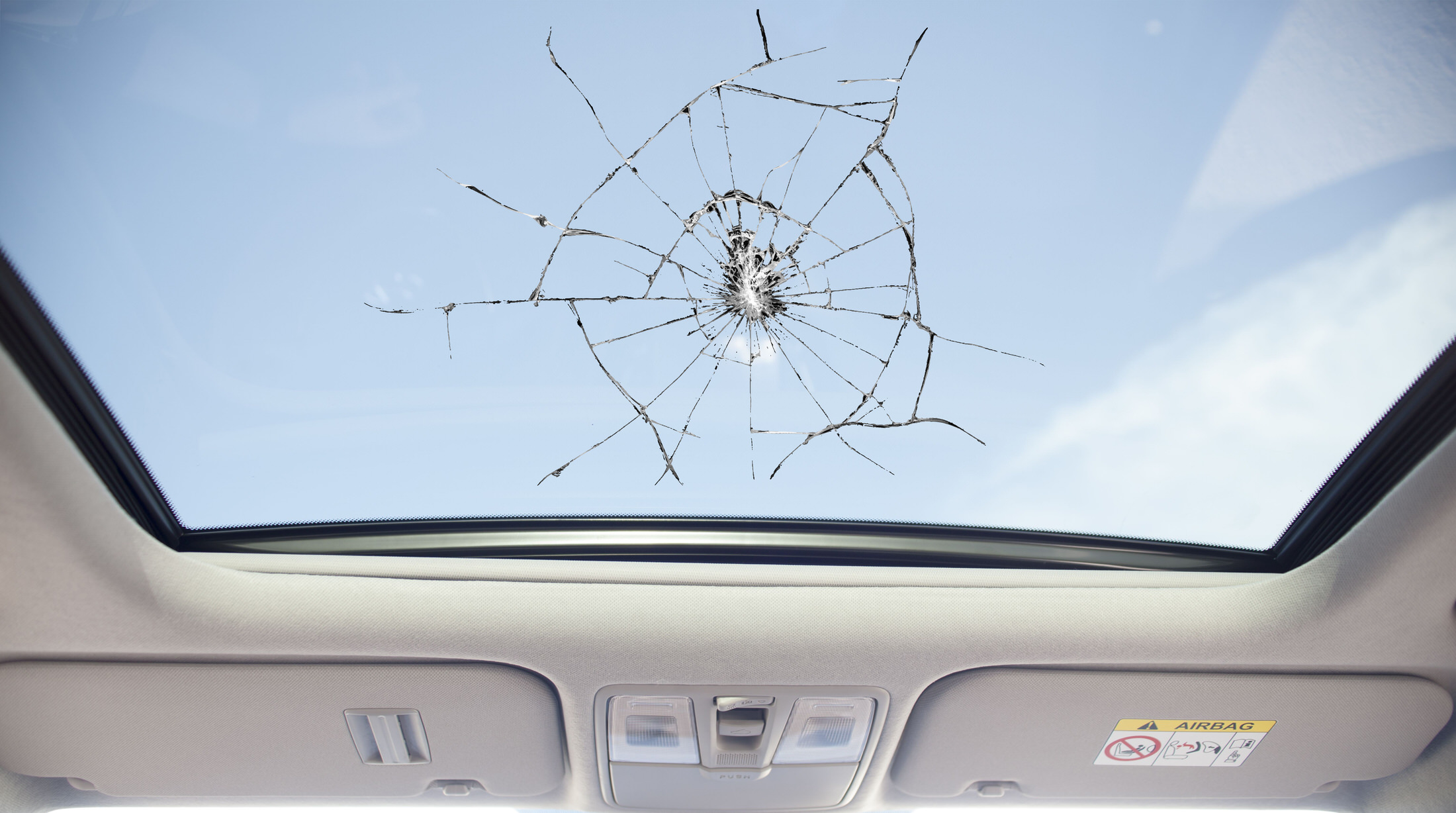
Mazda CX-5 owners have reported a scary safety hazard – their sunroof glass explodes without warning. This dangerous issue affects models from 2016-2022. Many drivers describe the sound as “a gunshot going off” right above their heads.
Exploding Sunroof Description
The sunroof usually fails with a loud “pop” or “bang” before the glass shatters in both directions. The noise is so intense that drivers can temporarily lose control of their vehicle. The risk multiplies because these failures happen randomly while driving at high speeds or even with parked cars.
A CX-5 owner shared their experience: “I was driving on the interstate with my husband and our sunroof glass spontaneously shattered. We just heard a really loud bang, and all of the sudden we could hear the wind blowing”. These incidents happen on their own, not from debris or objects hitting the glass.
Exploding Sunroof Root Cause
The biggest problem stems from design defects that don’t account for heat expansion properly. The tempered safety glass contains high internal stress by design. This stress combines with tiny manufacturing defects or edge damage to create the perfect storm for sudden failure.
Most dealers and Mazda representatives don’t accept this as a manufacturing defect. They blame the failures on environmental factors like temperature changes or flying debris. The pattern of failures tells a different story, as most incidents happen on hot, sunny days, pointing to thermal expansion issues.
Exploding Sunroof Repair Cost
Replacing a sunroof is a big deal as it means that parts alone cost between AED 1371.18 and AED 1547.21. The total bill, including labor, runs up to AED 2724.58.
Mazda’s handling of the situation varies widely. While some owners get warranty coverage, others face outright rejection. The owner of a 2020 CX-5 with less than 4,000 miles couldn’t get help from their local dealer or Mazda USA.
Insurance might help cover the costs, but you need comprehensive coverage and must still pay deductibles. The good news is that most sunroof shades close downward, so interior glass damage rarely occurs when the shade is closed.
Windshield Defrosting Failure
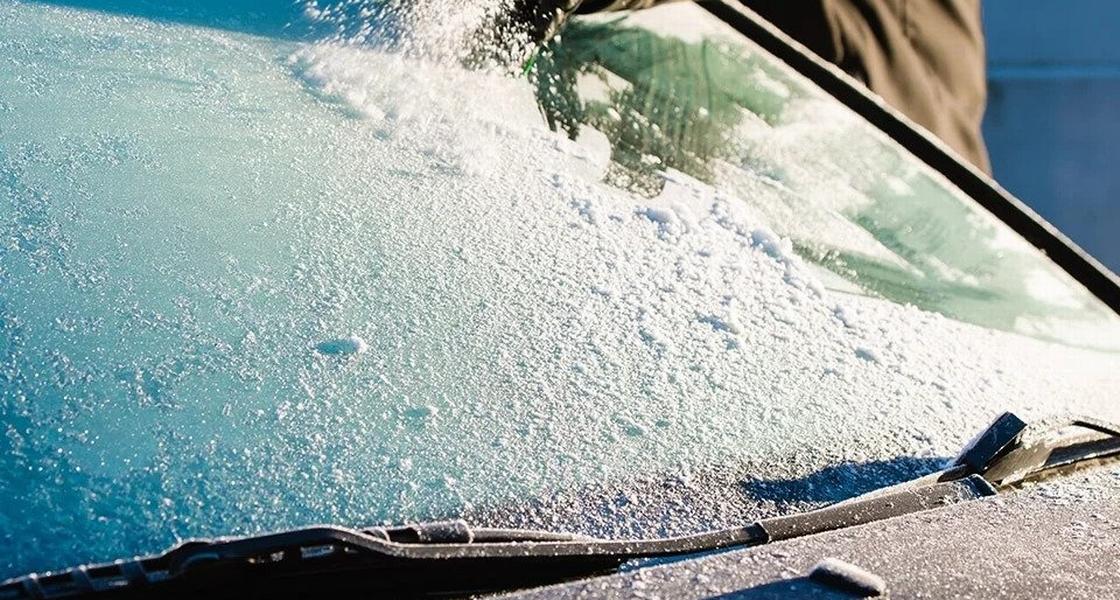
Many Mazda CX-5 owners face dangerous visibility issues in winter due to a major design flaw in their vehicle’s defrosting system. Drivers must squint through partially cleared glass as temperatures drop. This creates real safety risks during cold weather driving.
Windshield Defrosting Failure Description
The defrosting system doesn’t work evenly across the windshield. The center portion clears properly while the sides stay blocked by ice or fog. The areas near the A-pillars get poor airflow, which limits the driver’s side vision in winter. Snow gets pushed up toward the A-pillar area by the left wiper. The lack of proper heating means the returning wiper just smears ice and snow across the glass.
Drivers call this “the worst windshield defrost system” compared to other vehicles they’ve owned. This issue affects 2016-2021 models, and cold-climate drivers have filled multiple forum threads with complaints. A driver stated: “Vision is severely impaired during rainy or snowy days (worse during nights) while driving and it makes the driving very dangerous”.
Windshield Defrosting Failure Root Cause
The problem lies in the air duct design that sends warm air to the windshield. The system has about 12 inches of vents aimed at the center and roughly 60 degrees to each side. The critical flaw is that no vents direct air toward the windshield ends near the A-pillars. Ice and fog build up in these areas because they lack proper airflow.
Mazda’s manual tells owners to set the temperature control to hot or warm in defrost mode. This advice doesn’t help much because the airflow design is fundamentally flawed.
Windshield Defrosting Failure Repair Cost
This design flaw means repair options are scarce. Dealerships tell owners bluntly that “everything was working properly” and “there is nothing they can do to improve the situation”. No recall or technical bulletin exists to fix this problem.
Some drivers use frequent shots of windshield washer fluid as a quick fix, but relief lasts only moments. Others suggest extending air ducts or adding new ones to the A-pillars – changes that Mazda doesn’t support. Higher trim models come with a windshield de-icer grid that works with the rear defrost button, which helps somewhat.
Windshield Cracking
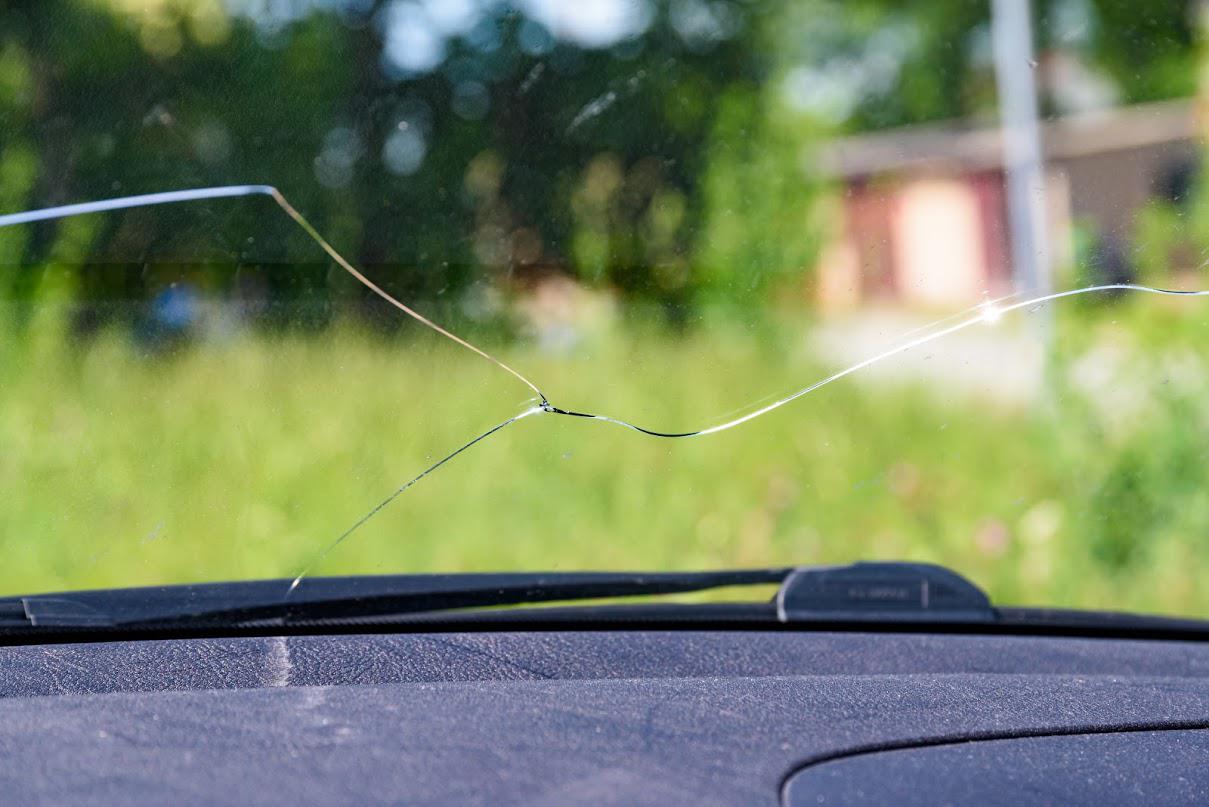
Mazda CX-5 models face serious windshield cracking issues. Owners report mysterious fractures that appear without any visible impact damage. This problem affects multiple generations, and owners have filed numerous complaints about the 2013-2017 models.
Windshield Cracking Description
The cracks in Mazda CX-5 windshields usually start as small chips that spread into larger fractures faster than normal. Many owners have spotted cracks that seemed to appear out of nowhere while their cars were parked. These cracks often begin at the top center and move downward in straight or S-shaped patterns. A 2013 CX-5 owner shared their experience: “We have the same problem – 4000 miles cracked windshield, and no replacements available”. New vehicles with low mileage seem most vulnerable, with cracks showing up just days after purchase. One owner’s frustrating experience stands out: “Our Mazda still has less than 6,000 miles on it and has cracked in another spot in the windshield and we’ve owned it almost a year”.
Windshield Cracking Root Cause
The main problem likely comes from thinner glass used to make vehicles lighter, which makes windshields more prone to damage. Glass quality issues create another concern since cracks develop without any visible impact points. Materials scientists who analyzed these failures suggest that the vehicle’s design might put extra stress on the glass. Temperature changes in warmer areas cause the glass to expand and contract. This thermal stress can lead to cracks, especially when small chips exist.
Windshield Cracking Repair Cost
Mazda CX-5 windshield replacement costs more than standard vehicles because of its integrated safety features. Models with Smart City Brake Support systems and rain sensors need AED 1101.58-AED 1835.97 ($300-$500) for replacement. Cars with advanced driver assistance systems (ADAS) cost even more due to recalibration needs. While insurance usually covers replacement, you might need to pay deductibles. OEM glass provides the best fit and works perfectly with safety systems but costs more than aftermarket options.
Suspension Wear and Tear
A Mazda CX-5’s smooth ride becomes rough and unpredictable when suspension components wear out. This common failure affects both comfort and safety as the car gets older.
Suspension Wear and Tear Description
The CX-5’s suspension problems show up with several clear warning signs:
- Excessive bouncing after hitting bumps or pressing brakes
- Rough, uncomfortable ride on even smooth roads
- Pulling to one side during curves or corners
- Uneven vehicle stance where one side sits lower
- Unusual noises like clunking, creaking, or banging while driving
- Accelerated tire wear showing uneven tread patterns
Many owners have reported leaking rear shock absorbers in cars with low mileage. A CX-5 owner found leaking rear struts with less than 10,000 miles on the odometer. The dealership’s response was surprising: “The rear shocks can leak fluid. They are not leaking enough to be replaced”.
Suspension Wear and Tear Root Cause
The biggest problem comes from early wear of most important parts including struts, bushings, and control arms. The CX-5’s suspension design puts heavy stress on these parts during regular driving. Regular exposure to rough roads, potholes, and speed bumps makes things worse.
Manufacturing differences play a role too. Some production batches came with less durable parts, which led to early failures. Cars driven often on uneven roads naturally see their suspension wear out faster.
Suspension Wear and Tear Repair Cost
CX-5 owners need to spend quite a bit to fix suspension issues. Shock absorber repairs cost around £291.40 ($360) on average. Complete replacement costs a bit more at £306.31 ($380) for each side.
Total costs change based on location and who does the work:
- Strut assembly replacement: $1,050-$1,650 based on model year
- Front suspension repair: $892-$1,090 for parts and labor
- Rear suspension work: usually $1,380-$1,690
Quick action on suspension problems prevents damage to other parts and saves money in the long run, even with the high upfront cost.
Comparison Table
Problem Key Symptoms Primary Cause Repair Cost Range Affected Years Control Short Circuit Engine cuts out, multiple warning lights appear, brake assistance reduces Damaged wiring/connections, poor ground connections $75-300+ 2012-2017 Daytime Running Lamps Flickering DRL lights flicker and fail Sulfur-releasing gasket corrodes LED circuit $600-1,500 per side 2016 Fuel Pump Impeller Failure Engine loses power, stalls, makes whining sounds Manufacturing solvent deforms impeller $270-400 2018-2019 SCR System Wiring Damage Warning lights activate, speed limits to 31 mph Wiring harness lacks wear resistance $320 2018-2020 Stub Axle/Shock Absorber Issue Clicks during turns, handling becomes unstable Loose screw connection between parts $360-380 per side 2014+ Defective ECU Engine light turns on, idle becomes erratic, stalls Electrical problems, moisture damage, age $850-1,650 Not mentioned Headlight Lens Fogging White haze appears, visibility decreases Temperature changes, gasket leaks $120-600 per side 2013-2016 Handbrake Auto-Engage Brakes engage unexpectedly AUTOHOLD system malfunctions, switches fail $200-300 2016-2021 Transmission Fluid Leak Red fluid pools form, gears shift poorly Seals, gaskets, cooler lines fail $365-635 Not mentioned Infotainment Ghost Touch Screen selects options randomly, system fails Touchscreen digitizer fails $600-775 2017-2020 Won’t Shut Off Properly Engine runs after key removal Ignition switch or ECM malfunction $240-900 Not mentioned Exploding Sunroof Glass shatters suddenly with loud noise Heat expansion design flaws $375-740 2016-2022 Windshield Defrosting Failure Defrost works unevenly, visibility suffers Air duct design limitations Not repairable 2016-2021 Windshield Cracking Cracks appear and spread quickly Glass thickness issues, structural stress $300-500 2013-2017 Suspension Wear and Tear Vehicle bounces excessively, rides rough, pulls aside Components wear out early $360-1,690 Not mentioned
Conclusion
The Mazda CX-5 gets high marks in driver satisfaction surveys. Our detailed breakdown shows some costly issues that could empty your wallet fast. Repair costs range from simple control short circuits at $75 to expensive ECU replacements over $1,650. Many owners face these costs without warning, as shown by owner stories throughout this piece.
Repairs become extra frustrating when dealers won’t admit manufacturing defects. The exploding sunroof problem shows this clearly. Many owners report dealers completely deny coverage despite clear failure patterns. On top of that, some design flaws like the windshield defrosting system have no fix at all. This leaves owners stuck with safety concerns during winter driving.
Your model year choice matters a lot when buying a Mazda CX-5. The 2016 models had daytime running light recalls affecting 36,000 vehicles. The 2018-2019 models struggled with dangerous fuel pump impeller failures. Research your specific model year’s common problems before buying a used CX-5.
Smart CX-5 owners watch for early warning signs and fix problems quickly. Early detection of transmission fluid leaks prevents total transmission failure. Quick action on infotainment ghost touch saves major headaches later. Without doubt, good maintenance will help your vehicle last longer and cost less to repair.
Understanding these common Mazda CX-5 problems helps you make smarter choices about your vehicle. Regular checks of these known trouble spots can catch issues early. A proactive maintenance approach will keep your CX-5 reliable and protect your wallet for years ahead.
FAQs
Q1. What are some common electrical issues in the Mazda CX-5?
Common electrical problems include control short circuits, daytime running light flickering, and infotainment system “ghost touch”. These can lead to engine cutting out, reduced brake assistance, and unpredictable touchscreen behavior.
Q2. How much does it typically cost to repair transmission fluid leaks in a Mazda CX-5?
Transmission fluid leak repairs for the Mazda CX-5 can range from $365 to $635, depending on the severity and source of the leak. Minor gasket replacements are on the lower end, while more complex issues like torque converter seal replacement are more expensive.
Q3. Are there any safety concerns with the Mazda CX-5’s sunroof?
Yes, some Mazda CX-5 models (2016-2022) have experienced spontaneous sunroof glass shattering. This can occur without warning, even while driving, and repair costs can range from $375 to $740.
Q4. What suspension problems are common in the Mazda CX-5?
Common suspension issues include premature wear of struts, bushings, and control arms. Symptoms include excessive bouncing, rough rides, and uneven vehicle stance. Repair costs can range from $360 for basic repairs to $1,690 for extensive suspension work.
Q5. How reliable is the Mazda CX-5’s windshield?
The Mazda CX-5, particularly 2013-2017 models, has been prone to windshield cracking issues. Cracks often appear spontaneously and spread quickly. Replacement costs typically range from $300 to $500, with higher costs for models with advanced driver assistance systems.


